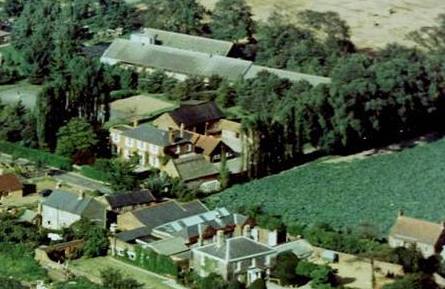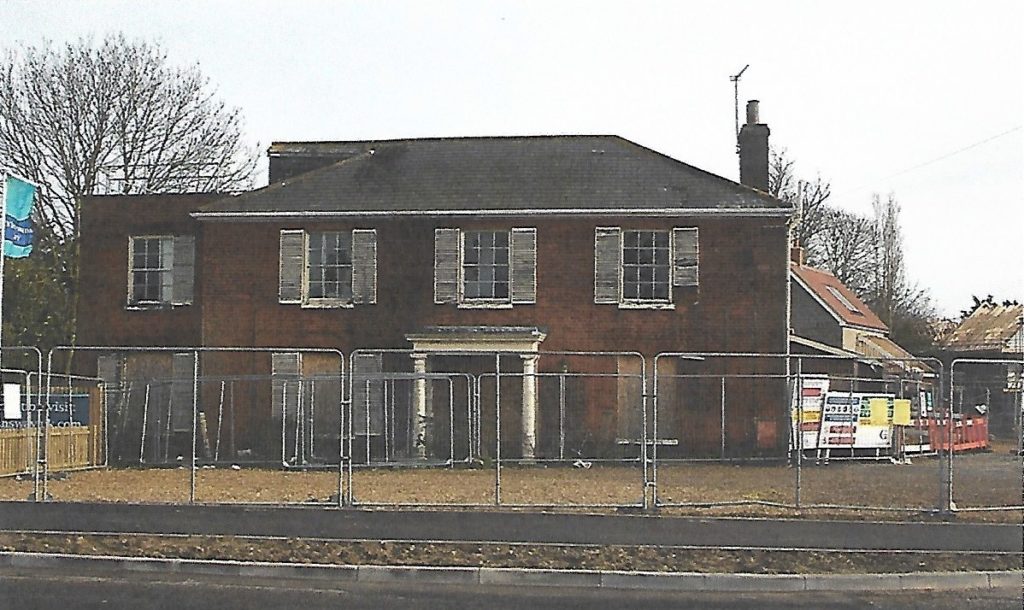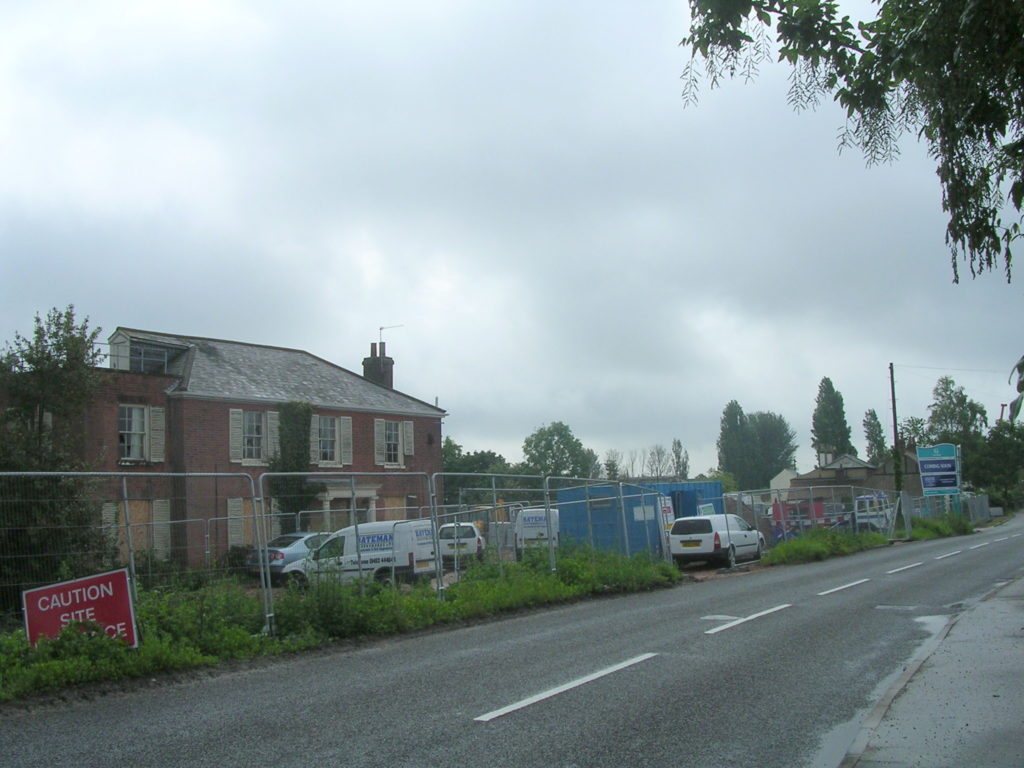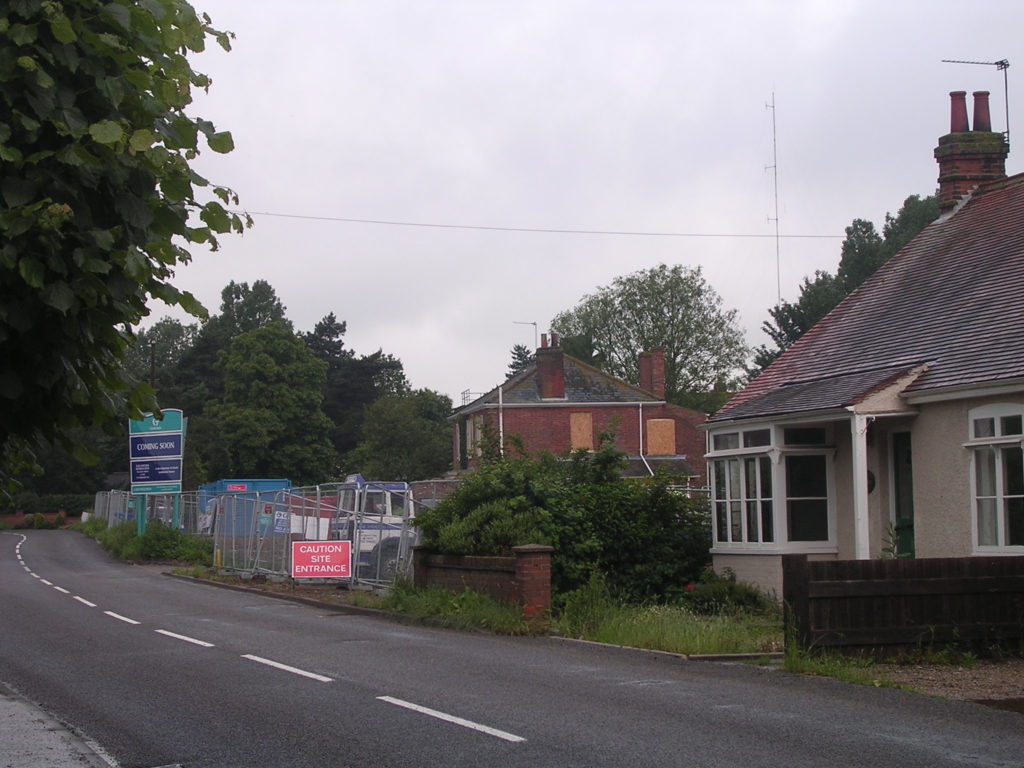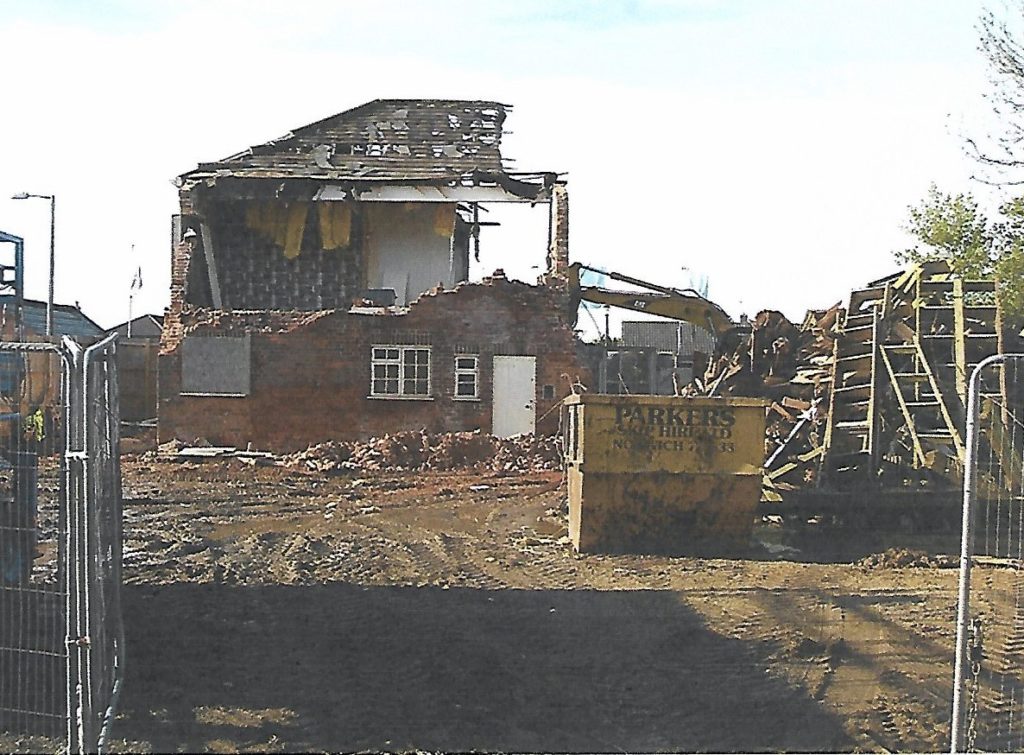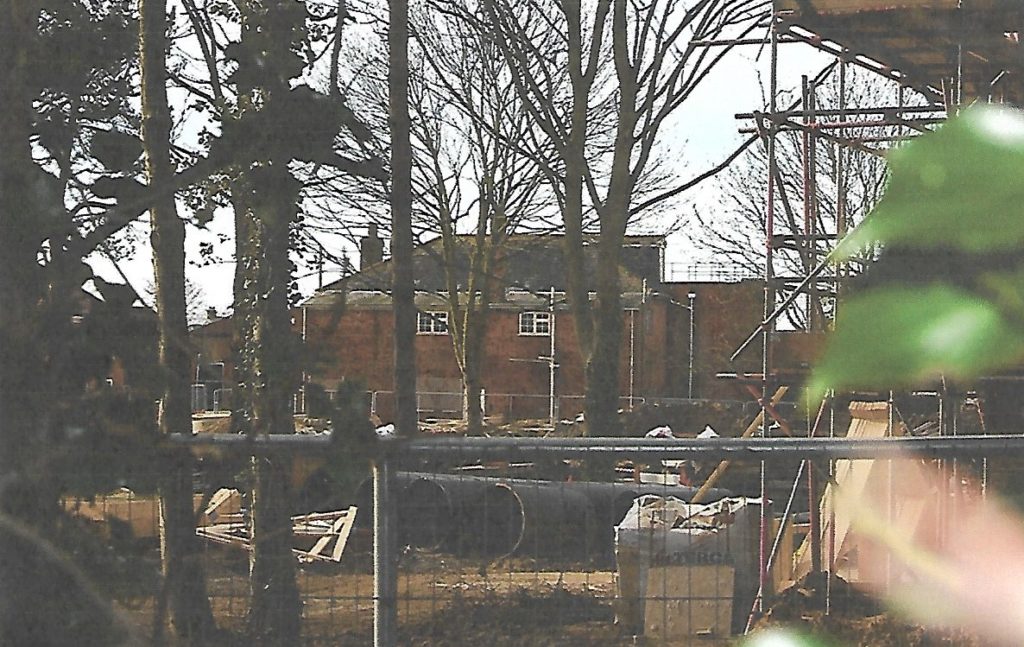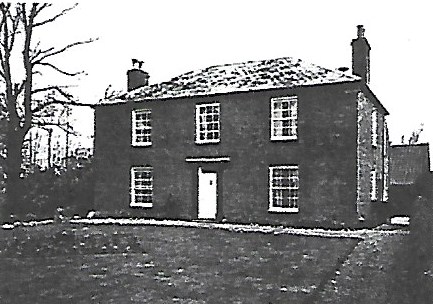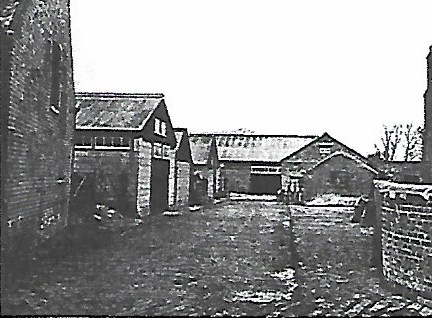Elmside House, White Street, Martham
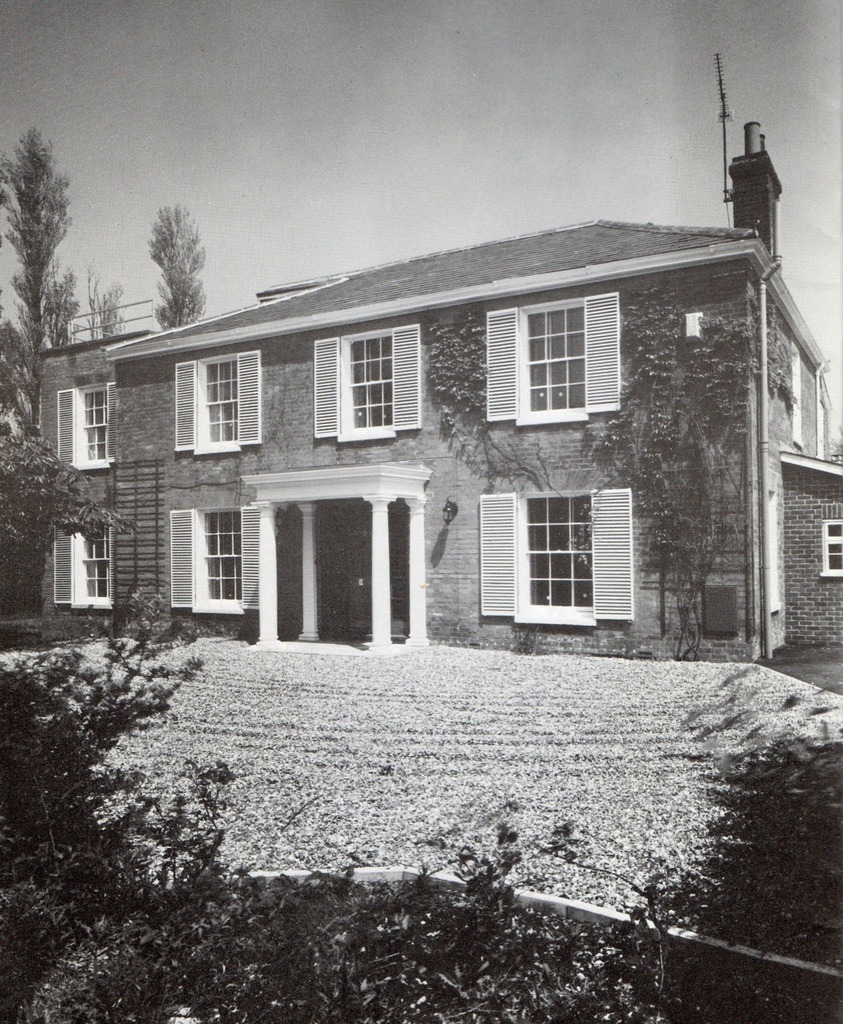
“Elmside” was a fine example of a prestigious house built by a yeoman farmer called William Johnson (1787-1857). It stood prominently on the east side of White Street. It was built in the early 19th century or even the 18th century. It was there in 1842 and is shown on the Martham Tithe Award map as plot 656 which at that time belonged to William Johnson.
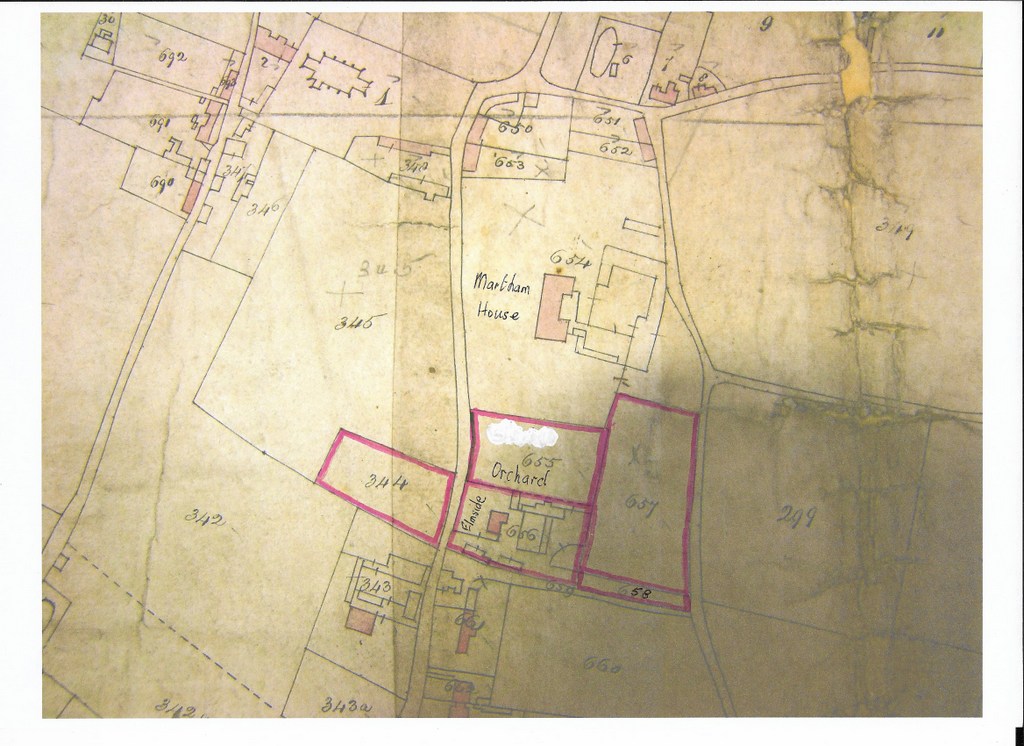
William seems to have moved from Carlton St Peter, in South Norfolk to Martham as early as 1817 and certainly lived here when he was listed in the Register of Electors for Martham in 1832, 1835 and 1836 when the entries have him as living at Johnson’s Farm. This therefore could have been an earlier house on the same site; the same house that changed its name or, less likely, somewhere completely different in Martham.
The house was certainly an outstanding example of the best quality of building in bricks made in Martham known as Norfolk Reds. There are hardly any other houses that remain from that era, built in Norfolk Reds.
On 17th July 1937 the house and its associated farmland was put up for auction as part of the Martham Estate. It had been acquired by William James Bracey (1847-1922) who had accumulated hundreds of acres of land in Martham to enhance his farming activities that centered on diary cattle and black current production. The Trustees of his Estate, headed up by his son also called William (1870-1949), had continued the business long after his father’s death but the whole estate was sold on 17th July and part of Lot No1 included Elmside House and its farm land (as well as Martham House). The house was actually occupied at that time by the grandson of William James Bracey called Wilfred Bracey (1896-1959). Shown below are two pages from the sale catalogue listing which describe the house and land that went with it. Also below is a map showing most of the ‘home’ plots of land outlined in green that went with the house. The purchaser of Lot No1, was William Alexander Alston of Billockby who paid £8,800. Originally from Scotland, he moved into the house and was there until the 1960’s.
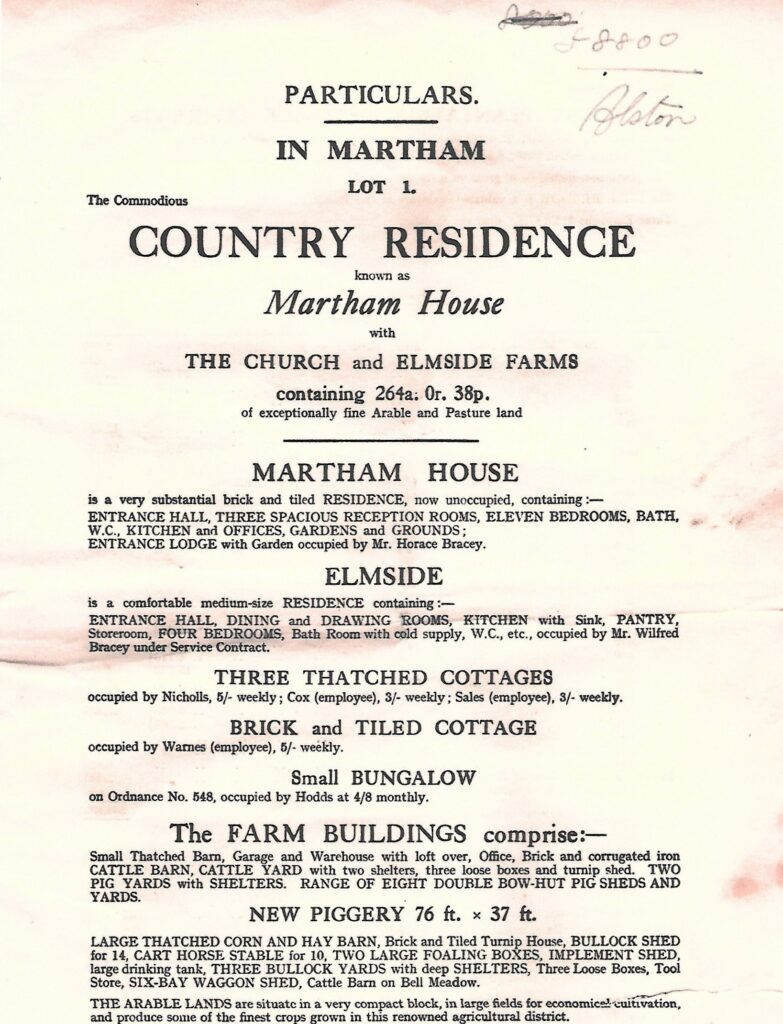
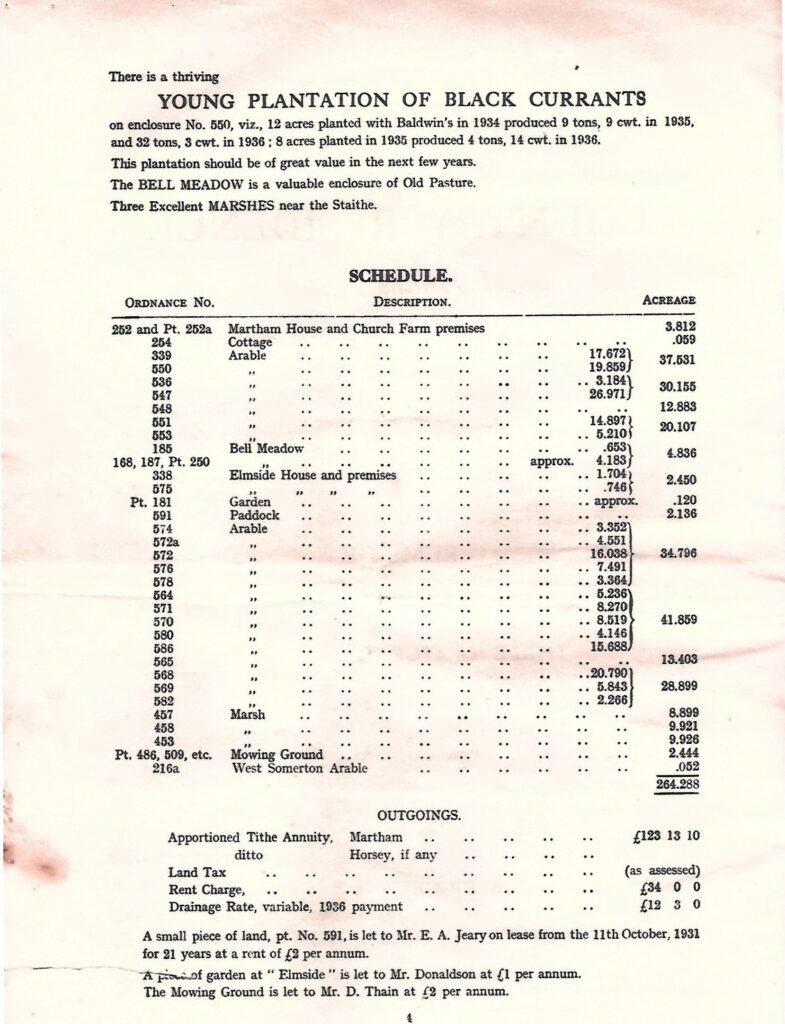
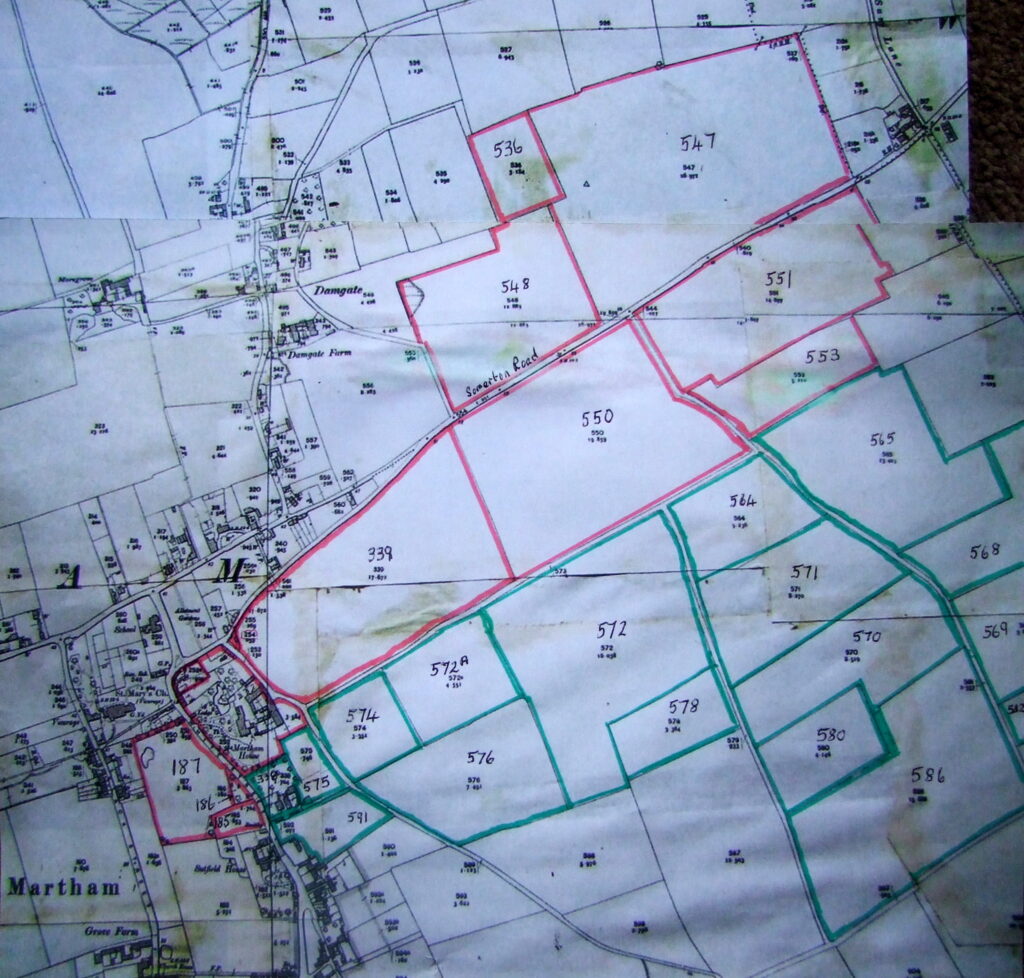
The last owner/occupier of the house was the local businessman Donald Bradfield who at the time owned Broadland Mushroom Farm which was next door to the house. He had also developed the Countryside Collection in barns to the rear of Elmside. The Collection was a very popular visitor centre in Broadland and displayed various items of rural life and dioramas of farming. Donald died in 1995 and for a long while the house stood empty until finally falling into the hands of a developer. In 2008 proposals were made to demolish the house and replace it with a terrace of eleven cottage-style homes. The Parish Council and local community mounted an impassioned campaign to save the house based on its historical importance and suggested various alternatives to convert it whilst essentially retaining its core structure. They were all turned down and in the end The Secretary of State favoured commercial greed over historical importance and allowed the development. Elmside House was demolished in 2012.
